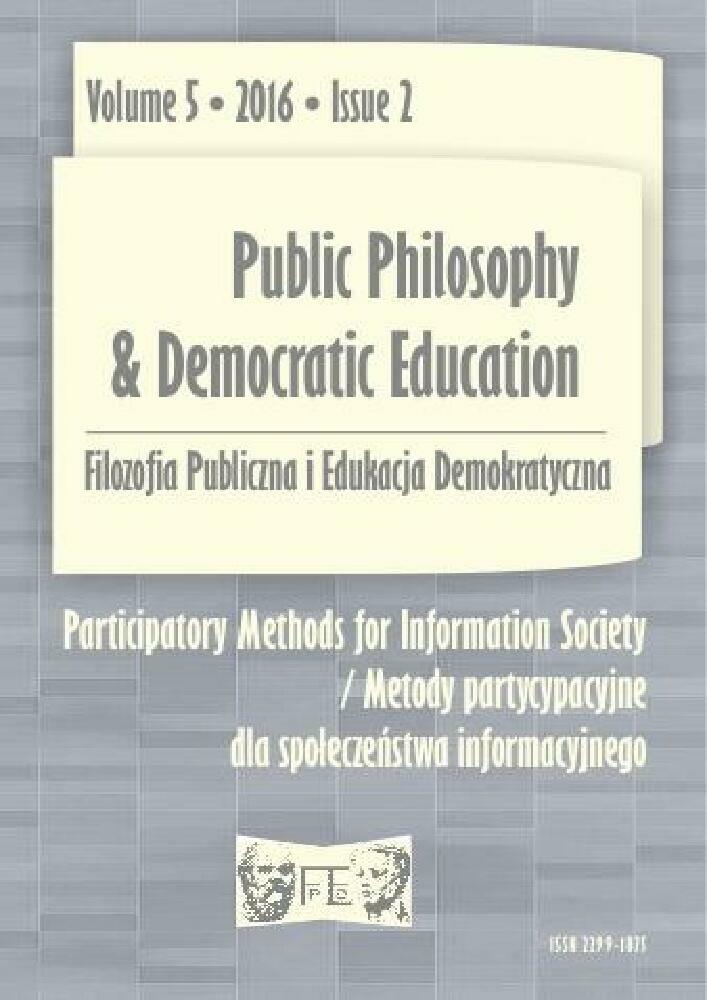Abstrakt
The present essay is a reflection inspired by the excellent book “Human Face of Computing” (editor Cristian S. Calude, published by Imperial College, Press, 2016) that is the outcome of a participatory exploration carried out by and insider (C. Calude) on the history of computing science with with its wide and deep ramification that are influencing all human activities. The book is based on interviews with outstanding researchers in computing science, mathematics, Internet, physics and technological sciences who have landmark contributions to computing science and are deeply interested in its applications, impact, uses and abuses in social life. The book explores the consequences of this field on the quality, production and democratization of knowledge.
Bibliografia
Boltzmann, L. (1974). Theoretical physics and philosophical problems. Dordrecht: Reidel.
Baumeister, R., Leary, M. R. (1995). The need to belong: Desire for interpersonal attachments as a fundamental human motivation. Psychological Bulletin, 117(3), 497-529.
Carpenter, B. (2006). Better, faster, more secure. Queue, 4(10), 42-48.
Christakis, N. A., Fowler, J. H. (2012). Connected: The surprising power of our social networks and how they shape our lives. How your friends’ friends’ friends affect everything you feel, think and do. New York: Back Bay Books.
Csikszentmihalyi, M. (1988). Motivation and creativity: toward a synthesis of structural and energistic approaches to cognition. New Ideas in Psychology, 6(2), 159-176.
Csikszentmihalyi, M. (1991). Flow. The Psychology of Optimal Experience. New York: Harper Perennial.
Csikszentmihalyi, M. Getzels, J. V. (in press). Creativity and problem solving. In: F. H. Farley, R.W. Neperud (Eds.), The Foundations of Aesthetic, Art, and Art of Education. New York: Praeger.
Deci, E. L., Ryan, R. M. (1985). Intrinsic motivation and self-determination in human behavior. New York: Plenum.
Deci, E. L., Ryan, R. M. (2000). The “what” and “why” of goal pursuits: Human needs and the self-determination of behavior. Psychological Inquiry, 11, 227-268.
Feyerabend, P. (1979). Science in a free society. London: New Left Books.
Fuller, S. (1995). Philosophy, rhetoric, and the end of knowledge. The coming of science and technology studies. Madison: The University of Wisconsin Press.
Giner-Sorolla, R. (2012). Science or art? How aesthetic standards grease the way through the publication bottleneck but undermine science. Perspectives on Psychological Science, 7(6), 562-571.
Goody, J. (1986). The logic of writing and the organization of society. Cambridge: Cambridge University Press.
Goody, J. (1987). The interface between the written and the oral. Cambridge: Cambridge University Press.
Goody, J. (2000). The power of the written tradition. Washington: Smithsonian Institution Press.
Greenwald, A. C. (2012). There is nothing so theoretical as a good method. Perspectives on Psychological Science, 7(2), 99-108.
Holton, G. (1973). Thematic origins of scientific thought: Kepler to Einstein. Cambridge, MA: Harvard University Pres.
Holton, G. (1978). The scientific imagination. Cambridge: Cambridge University Press.
Ioannidis, J. P. (2012). Why science is not necessarily self-correcting. Perspectives on Psychological Science, 7(6), 645-654.
Knorr-Cetina, K. (1981). The manufacture of knowledge. Oxford: Pergamon Press.
Knorr-Cetina, K. (1999). Epistemic cultures. How the sciences make knowledge. Cambridge, MA: Harvard University Press.
Kuhn, T. (1962). The structure of scientific revolutions. Cambridge: MIT Press.
Latour, B. (1999). Pandora’s hope. Essays on the reality of science studies. Cambridge, MA: Harvard University Press.
Latour, B., Woolgar, S. (1986). Laboratory of life: The social construction of scientific facts. Princeton: Princeton University Press.
Lewin, K. (1951). Field theory in social science: Selected theoretical papers. New York, NY: Harper & Row.
McClellalnd, D., C. (1961). The achieving society. Princeton, N. J.: Van Nostrand.
McClelland, D. C. (1966). The use of measures in human motivation in the study of society. In: J. W. Atkinson (Ed.), Motives in fantasy, action, and society. New York: Van Nostrand.
Merton, R. K. (1973). The sociology of science. Chicago: The University of Chicago Press.
Mitroff, I. (1974). The Subjective side of science. A Philosophical inquiry into the psychology of the Apollo Moon scientists. Elsevier: Amsterdam.
Ong, W. J. (1971). Rhetoric, Romance, and Technology. Studies in the Interaction of Expression and Culture. NY: Cornell University Press.
Ong, W. J. (1982). Orality and Literacy: The Technologizing of the Word. London: Methuen.
Pólya, G. (2004). How to solve it. A new aspect of mathematical method. Princeton: Princeton University Press.
Popper, K. (1959). The logic scientific discovery. New York: Harper and Row.
Stroebe, W., Postmes, T., & Spears, R. (2012). Scientific misconduct and the myth of self-correction in science. Perspectives on Psychological Science, 7(6), 670-688.
Toda, M. (1982). Man, Robot, and Society. Models and Speculations. Boston: Martinus Nijhoff.
Toda, M. (1993). The urge theory of emotion and cognition. Emotion and urges, SCCS Technical Report, 93-1.
Vallerand, R. J. et al. (2003). Les passions de l’ame: on obsessive and harmonious passion. Journal of Personality and Social Psychology, 85(4), 756-767.
Licencja
Prawa autorskie (c) Autorzy zachowują prawa autorskie i prawa do publikacji swoich artykułów w tym czasopiśmie, przyznając czasopismu prawo do ich rozpowszechniania na warunkach CC BY-NC-ND 4.0
